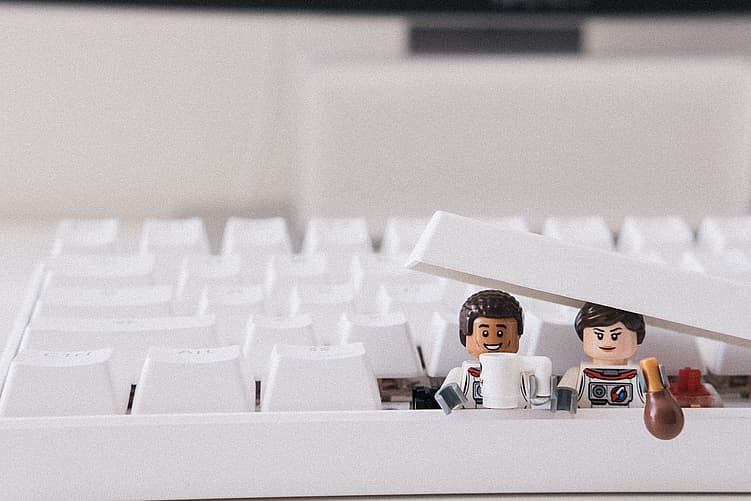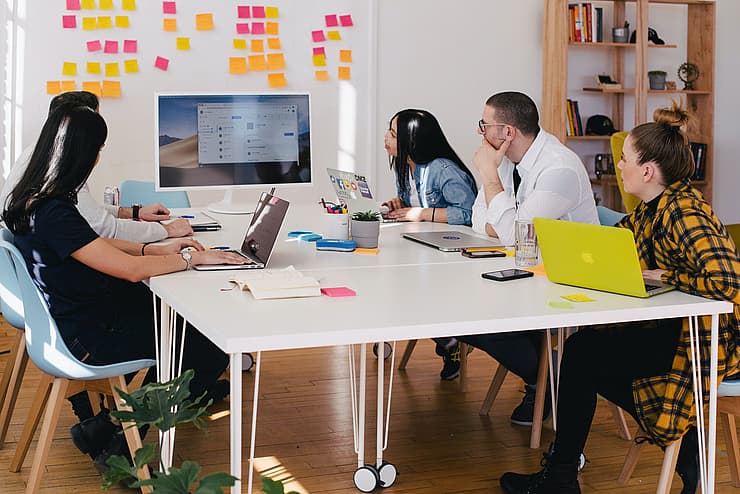How to run a web project remotely: Discovery.
12.05.2020
Boris says – If you can work at home, work at home, if you can’t, go to work. Is lockdown over? Who knows! Either way, there is no actual need to meet your web developers…
This is the second part in our series on how to run a web project remotely. If you missed part one, you can find out how to select a web design agency for a website project remotely, in this post.
Your website is probably your hardest working marketing asset. It works for you while you’re asleep or even off sick. If it isn’t working hard for you, then it might be time for an update. You may think that this is impossible without meeting face to face, but we have run lots of projects for international clients who we have never met in person. With the right process and tools, it is possible to run a web project entirely remotely – and effectively.
In the second part of this series, we’ll explore how to run the discovery phase of a web development project. After all, web design projects don’t start with design, they start with discovery.
So, what needs to be included in the discovery phase of a website design project?
Internal stakeholder research.
Internal stakeholders are anyone within the organisation that are affected by or need to use the website. It is important to get views of internal stakeholders for two reasons. Firstly, they need a sense of ownership in order for the project to be deemed successful. This is obviously true for senior figures who need to have their say, but is also true for department heads and even those on the ground who will be using the site daily. The second reason is that different stakeholders have different needs that can sometimes be forgotten or miscommunicated. Missing out a key requirement at this point can be costly.
We normally do this by interviewing department heads either in person or by phone. This would work equally well remotely via video conferencing.
We’d recommend that you speak to internal stakeholders when preparing the brief, however the agency will often be able to get information from them that you won’t, so it is worth letting them do it too. If you’re going to get the agency to do the interviews then we’d recommend thinking long and hard about who to include. The more people, the more information however it will take more time and therefore cost more. To prepare, we’d recommend holding informal meetings to sound out who is important.
External stakeholder/customer research.
External stakeholders are usually customers, but they could be donors, student applicants, job seekers, partners, or people you want to influence. It is really common in B2B projects to structure your website around your departments or products, instead of user needs. We believe it is important that our solution is “user centric”. Therefore, we spend a good amount of time trying to understand your external stakeholders.
There are several ways this can be approached:
Use existing customer research.
Firstly, you may already have customer research in the form of feedback, surveys or for recent marketing campaigns. This can be analysed by you and your web agency to provide insight. You might have enough information from this alone, but if not there are a couple of other things you can try.
Interview customers about the website.
Speaking to current customers specifically with the website in mind can help. This can be done in the form of phone or video interviews or through surveys. We’d recommend both, but it is important to a broad mix of customers for the interviews, so as not to get bias results.
Survey potential customers on social media.
Many clients neglect to speak to people who are in their target audience but aren’t customers yet. A survey on social media can be a great way to reach these potential customers. A small ad campaign allows you to target people that match your ideal customers.
Desk research.
There is a whole bunch of desk research during the discovery phase of a website redesign and this can be done from anywhere. Desk research includes reviewing the market strategy, the brand guidelines, the site’s analytics, conducting a content audit, keyword research, competitor analysis, design trends review and various related activities. The agency won’t need much contact other than calls to talk through any analysis you already have and access to the various accounts, however you can do some of this yourself before you commission them to give them a head start.
Using the research.
After stakeholder and desk research you and the web agency should be in a good position to start formulating the solution.
Buyer personas.
Buyer personas are semi-fictional representations of your ideal customer. If you haven’t already got these for your marketing campaigns, then you or your agency can use the research to create these. Buyer personas should inform the content of your pages and the structure of the website. Buyer personas should be the result of either brainstorming with your team or internal stakeholder research by your agency. Either way, it can be done via video calls.
We have a guide on how to create buyer personas that you can read and a free template to download.
Information architecture (IA).
IA is about how information is organised and covers the site structure (sitemap), page layout and content types. As part of the discovery phase, you may want to conduct several planning exercises to formulate this. Often, these are done in groups using post-it notes or cards, however it can easily be done remotely. There are many online tools to facilitate exercises like card sorting and menu testing. We use a suite of tools from Optimal Workshop for helping plan and test website IA.
Content strategy.
Using the results of your content audit, keyword research and your IA and buyer personas, you can start formulating an approach to content generation for the new website.
We use a tool called Gather Content for planning and managing content for website redesigns. It is a web based collaboration tool, which allows assigning of content tasks with approval workflows. It allows content generation to be distributed and carried out entirely remotely, while sticking to the structure decided in the IA planning process. Content generation can continue throughout the design and development phase of the project.

Next: design and build.
After discovery, you’ll be ready for the actual web design part of the web design project. This too can be managed without anyone actually meeting. We’ll cover this in part three along with what to watch out for in the build phase.


